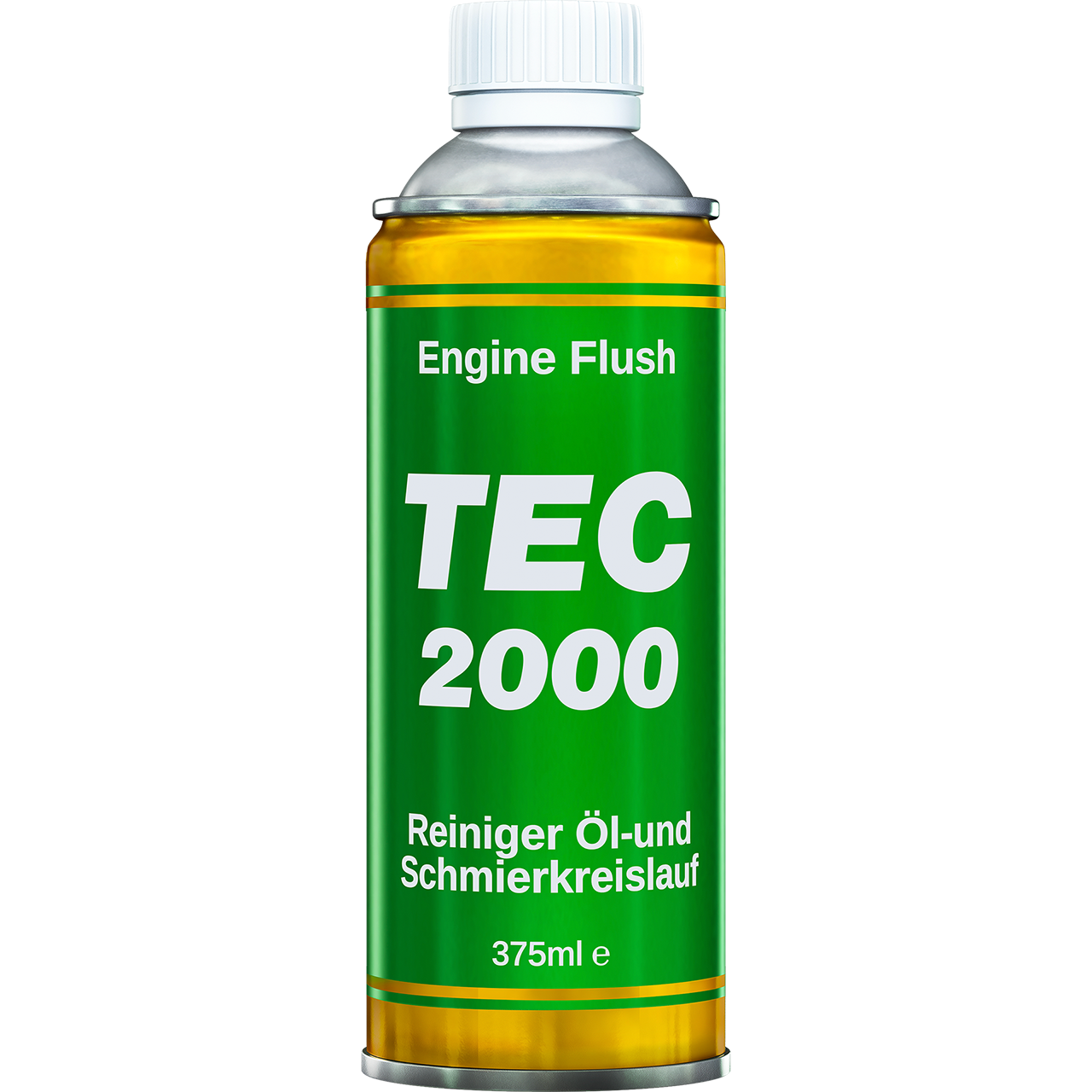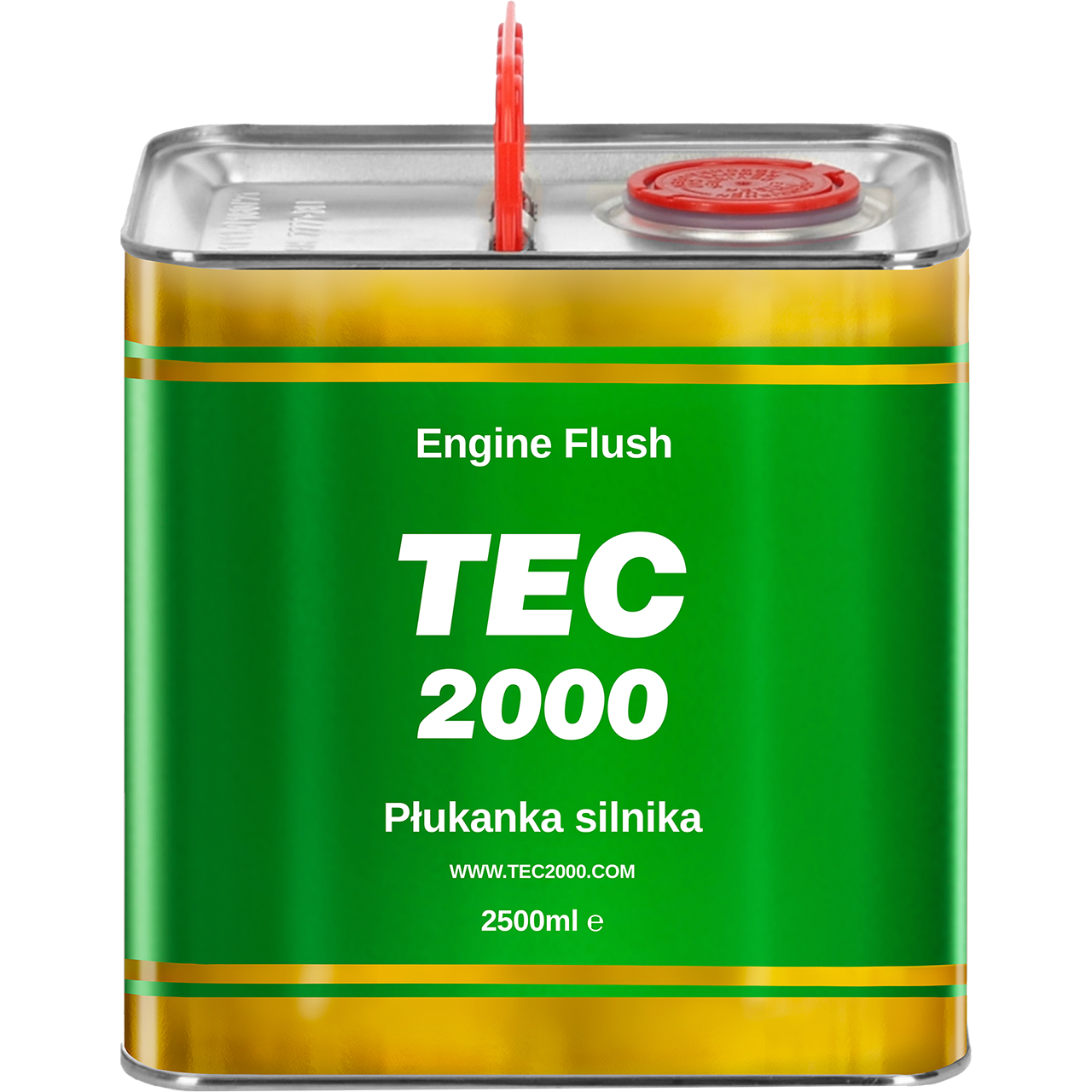

Engine flush
EAN 5060500720018TEC 2000 Engine Flush
TEC 2000 Engine Flush is an innovative engine rinse for internal combustion engines. It effectively removes all contaminants found in piston ring grooves, oil gallery channels, and valve lifters. TEC 2000 Engine Flush eliminates deposits, carbon buildup, soot, and thoroughly cleans out used oil. One can is sufficient for 4-5 liters of oil in cars and 5-6 liters of oil in motorcycles.

Product Reviews
“He did a good job. It restored compression on two cylinders by 3 bars. He did a great job of dissolving the oil and dirt in the engine. Oil was changed 2000 km and I did a flush on the pistons / in the oil , what I drained looked like tar something like this I have never seen. I recommend the product.”
“I bought two bottles because the engine has 220,000 km. One bottle I poured in the old oil and after 20 min of work I poured out the oil and changed the filter, the second bottle I poured in with the new oil and again the engine worked for 20 min.After pouring out the second time the oil which was black as tar I again changed the filter and poured in the right oil. I heartily recommend because everything looks like from the factory carbon build-up dissolved!!Compression improvement on the valves significant almost factory!”
“I do not hide that I approached this product very cautiously, not giving faith in such a miraculous action. After adding to the old oil, which had traveled about 9,000 km and the color dark, I waited 20min the engine worked at idle without any strange symptoms.Changing the oil and, of course, the filters pouring fresh oil the effect is that after driving 300km the oil is still light and the engine spins more nimbly.”
“Hello I will share my opinion of TEC2000 Engine Flush PREMIUM I have been using for a very long time I own from new from the showroom Toyota Avensis 2012 year station wagon 2. 0 d4d 126km 1ad tv I change oil every 10000 km max before oil change I go to the expressway because from me to the road is about 3 km I drive 25 km one way and 25 km the other way I have a canal at my place on the plot so I change oil myself when I come from the road I put the car on the canal add flush I leave the engine on for 15 minutes drain the oil and leave the car for about 24 hours on the canal after 24 hours pour new oil to which I change oil is of course MOTUL 8100 X-. CLEAN FE 5W30 of course and of course once every 3 months I add a preparation for cleaning injectors I have already driven 250000 km and the engine runs like a bell from change to change the engine does not take even a gram of oil in a word with my hand on my heart I can recommend TEC2000 Engine Flush PREMIUM as you take care so you have”.
“Good product, cleans the engine nicely, the oil in the diesel after a few thousand continues to be less than pitch black.”
“I am mega satisfied with the results. I have been using the products for some time in various cars no matter whether gasoline or diesel. They have never failed me yet. I recommend them to everyone.”
“Tested on their cars Nissan Patrol 2004 and BMW 318i 2012. product I recommend in bmw after the first rinse light oil in Nissan after the second rinse light oil, well and engine work better, guys on FB cool videos send, you can see yourself the comparisons.”
“Engine Flush works as it should, I have safely used it for a long time in many cars, customers come and want to pour it, they can see and hear the differences in their engines, the best comments are “Michal how come my smoke stopped after the oil change?” recommend it to everyone!”
“I use regularly at every oil change in my VOLKSWAGEN PASSAT B6 2.0 TDI-CR DPF 140KM 103kW well and I have to say that in our base we have no other model as failure-free as this VW with flush.”
“A very good quality product. My skepticism about flushed kept me away from it for a long time - which is a shame. It wasn't until a mechanic recommended that I use this product that I saw a significant difference. The engine now runs evenly, and the amount of sludge that fell out of the engine was a huge shock to me. The product is highly recommended.”
“As for this product, the flush can be said to be one of the more effective products. The product cleans the interior of the engine well, although the effect is not noticeable from the very beginning. I drove about 200 km and was only able to feel a significant improvement. The engine runs evenly, does not jerk and does not burn out. I am glad that I came across this very product.”
“One thing is for sure, the oil after using TEC2000 has a different consistency. It is more flowing and if it works as on numerous videos and raises the compression additionally then only praise:) I for sure will come back for TEC2000 products. I sincerely recommend.Tomasz”
“I don't remove the oil pan to see how the product cleans but after applying and changing the oil with new oil for a long time the oil is clean and the car is very purged . During the flush you can clearly hear after a few minutes that the engine starts to run quieter . Injection flushes are already waiting .”
"Super produkt. Na początku czytałem opinie , pierwszy raz zastosowany do Renault Master 165dci (przebieg 600tys). Po zastosowaniu płukanki silnik wyciszył się na zimnym silniku , ogólnie poprawiła się kultura pracy. POLECAM"
“The flush really works! I use it at every oil change because I do short runs. I previously used a competitor's product (LM) and was also satisfied, but Tec2000 seems stronger. I highly recommend it!”
“Great product I have been using for a couple of years for every oil change every 10,000 km. The oil always comes off pitch black and thinned which makes it easy for all the old oil to flow out.”
“I have already applied to the poorly rated TSi1.4l 140 hp engine.Effectively quieter engine operation and a noticeable improvement in the dynamics of the car.However, let no one in their right mind count on the rinses to bring the 'dead car' back to life.”
“The best wash for car engines, I did a test on a couple of other rinses and I was shocked how this product handled the dirt even in test conditions , in the engine itself you can see with the naked eye after removing the valve cover how it handled the sludge, I recommend rinsing the engine at low speed even 30 minutes”
TEC 2000 engine flush
How the engine flush works

increases compression in the cylinders

removes deposits and carbon build-up from all internal engine surfaces

Allows you to get the full performance of the oil immediately after the change

cleans and quiets hydraulic valve tappets

Increases engine power by freeing baked piston rings

removes deposits from oil channels and piston ring grooves

neutralizes harmful acids in oil

Engine flush reduces harmful exhaust emissions

TEC 2000 Engine Flush
Grzegorz Duda demonstrates the effect of engine flush
TEC 2000 Engine Flush
How to use
TEC 2000 Engine Flush should be used during a standard oil change.
Add the product to the engine, still in the old oil. The engine should reach normal operating temperature. After adding the product, the engine should idle for about 10-15 minutes (the car should be in a ventilated room or outside to avoid exhaust gas poisoning). After this time, drain the old oil, install a new filter and top up with new oil.
In case the engine has developed problems such as sticky rings, uneven compression, increased oil consumption or black smoke, work with the preparation should last about 25-30 minutes before changing the oil.
The unique combination of highly effective detergents together with highly effective lubrication allows the product to be used in all internal combustion engines - gasoline, diesel and gas-powered. The operation is completely safe for the engine.
to reach a coolant temperature of ~60︒C
1 can 375 ml for 4-5 liters of motor oil
Note 1: Leave the car on private property, or in a well-ventilated room. Note 2: If you suspect that there is a large amount of carbon build-up in the engine, the engine manifests increased smoke, uses more than 1 liter of oil per 1000km, the flushing process can be extended.
Engine Flush is one of the first and few formulations in which Chlorinated Hydrocarbons have been abandoned - meaning no harmful fumes during formulation operation and a cleaner environment.
TEC 2000 Engine Flush is considered one of the most effective formulations for cleaning the engine interior. It is very easy to use in any conditions. TEC 2000 Engine Flush formula has been on the world market for more than 20 years and enjoys an excellent reputation among customers professionally involved in the automotive market.
How the product works
Test videos
FAQ
Frequently asked questions
Composition of TEC 2000 Engine Flush.
The rinse has 4 ingredients in it:
A) The primary cleaning compound is a newly developed Toluene C7H8 (toluene) (a surfactant compound with additional protection for action with plastics). Toluene has been modified and its boiling point has been raised.
B) Ester solvent (mild - organic)
C) ZDDP anti-seize additives
D) Hydrocarbons are the base (transport of solvents and additives)
TEC 2000 Engine Flush works when the oil is stirred (running) at engine operating temperature, however, the flush does not work at rest without stirring and without the proper temperature.
TEC 2000 Engine Flush, unlike kerosene, has ZDDP anti-seize additives and cleaners that penetrate the carbon build-up not tear it off, but dissolve it, so TEC 2000 Engine Flush is safe for the engine/oil, stronger and safer than kerosene or extraction gasoline.
Remember to pour new oil into a clean engine that has been safely cleaned from the inside with TEC 2000 Engine Flush.
Can Engine Flush be used in gasoline and diesel engines?
Yes. The product is designed for gasoline and diesel engines. In cars, trucks, motorcycles and boats. For two-stroke engines it is not recommended, but for gears and wet clutch it is recommended to use, together with Oil Booster.
Is there a difference in application for dry and wet clutch?
Yes.
Dosage for dry clutch is 375ml - 1 can per 4-5L of oil.
Dosage for wet clutch is 375ml - 1 can per 5-6L of oil
Does Engine Flush contain molybdenum or Teflon?
Does not include.
Does Engine Flush contain sulfur?
Does not include.
Is Engine Flush safe for Nikasil coating?
Yes, because it does not contain sulfur compounds that are dangerous to the Nikasil coating.
Can the DPF be damaged when using Engine Flush?
No, because the product does not produce soot during eventual combustion.
Is it possible to drive the car when you pour Engine Flush into the engine?
Not recommended. Normally, the engine should run at normal or higher idle speed. The time spent washing the engine from pouring to draining the old oil should not exceed 1 hour.
Why is this measure so expensive?
The price is a direct result of the technology and ingredients used in production. The composition of the product is the result of many years of research and testing. Ingredients that rinse and protect engine components without causing any negative effects. Flushing the engine with extraction gasoline can damage engine components, cylinder surfaces, and in extreme cases even lead to seizure. Engine Flush is safe for the engine. The product used in motorsport, manufactured in the UK guarantees quality.
Has there been any recorded damage to the engine after applying the flush?
Long-term use of the product has brought positive comments. To be sure, we conducted a long-term test on a 1.8 8V engine. The car was driven over 14 days in urban conditions, 16 kilometers per day. The engine had one full dose of Engine Flush poured in and the magnetic bolt screwed in, after draining the oil we noted no change on the magnetic bolt in the amount of filings.
TEC2000
Product related tips

Gosia Prus Kickstarts Rallycross Season with TEC 2000 at the Helm
Gosia Prus: A Force on the Track Gosia Prus, a seasoned driver known for her agility and sharp driving acumen, began the rallycross season with high expectations. Driving the BMW E36, a vehicle ce...

We couldn't miss the Moto Show Bielsko-Biała either. Drift displays between TEC 2000 cans, wrapped drift cars, remote-controlled rally models in green colors, and a booth filled to the brim with p...

Master Truck 2023 amazing truck event!
Master Truck Show 2023: A Showcase of TEC 2000 Innovation The Master Truck Show, held annually, is one of the premier automotive events in Europe, focusing on custom trucks, commercial vehicles, a...

